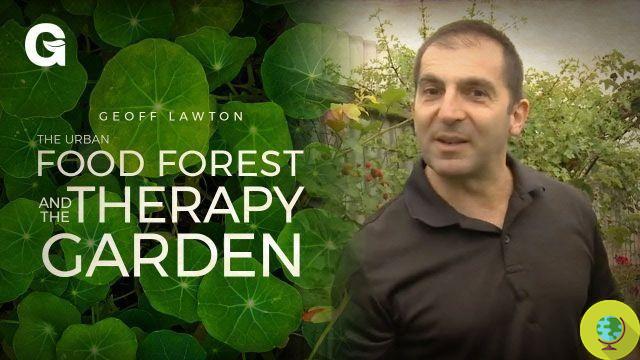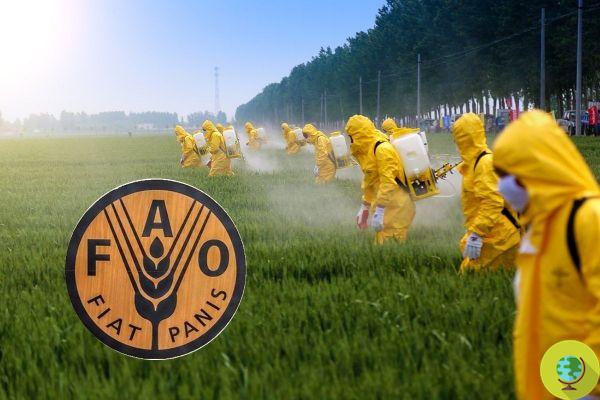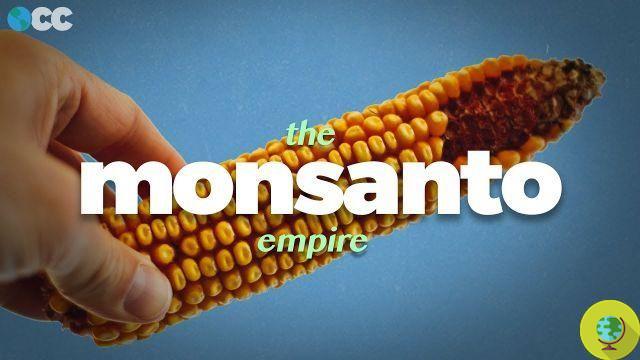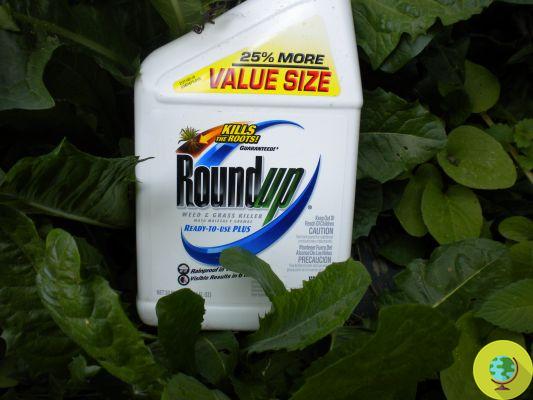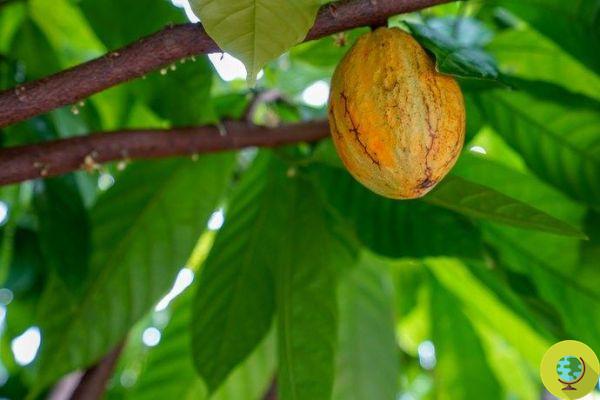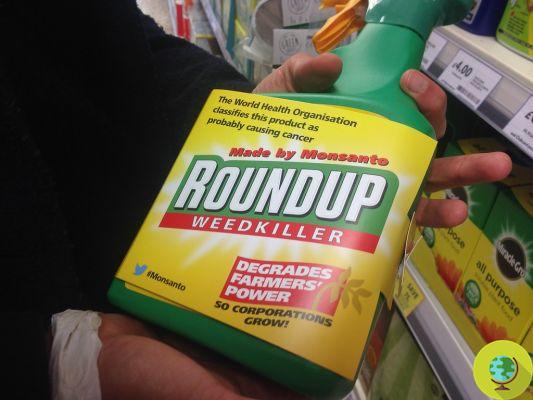Why has hemp been the victim of such a powerful and generalized demonization that it was in fact abandoned and relegated to a sort of collective oblivion?
He is about to end up run over, his mother saves himLa hemp or cannabis is one annual woody plant consisting of a tall and thin stem, scattered and surmounted by leaves, which can reach and in some cases exceed 4 meters in height. It is characterized by exceptionally strong fiber, pulp rich in cellulose and extremely nutritious seeds.
Hemp has the distinction of being a plant extraordinarily versatile, as it can be used in many sectors, depending on the different cultivation and processing methods.
Some uses of hemp, such as textiles and food, are traditional or even date back to the dawn of time: the sails of the ships of Phoenicians they were made with hemp fabric. Other products, on the other hand, are made possible by modern technologies, such as the use of hemp fibers as a nanomaterial to store energy.
Read also: Hemp: 10 uses in the most diverse sectors
From textiles to food, through cosmetics, the paper industry, the green building and bioplastic up to the production of energy: hemp is the protagonist in all these production areas.
Or at least it would have the potential to play a leading role. Practically all petroleum products could in fact be replaced with hemp derivatives.
Read also: Here's how hemp in buildings can protect us from the heat
La the hemp supply chain does not produce pollution, but on the contrary it is sustainable from an environmental point of view for a variety of reasons. First, growing hemp removes carbon dioxide emissions from the atmosphere.
In addition, using hemp cellulose, it would be possible to stop the plague of deforestation: hemp is an annual plant and therefore its life cycle is very short, unlike forest trees which take an average of 30 years to grow. Finally, the processing of hemp does not produce polluting or difficult to dispose of waste.
And then the question arises: why this plant was the victim of such a powerful and generalized demonization that it was in fact abandoned and relegated to a sort of collective oblivion?
The simplistic answer could be: because of the marijuana which is obtained from it, equated to a real drug since it contains the THC (delta-9-tetrahydrocannabinol), an active ingredient frompsychotropic effect.
The explanation is actually both more complex and decidedly more execrable.
Hemp, the real reasons for the ban on cultivation
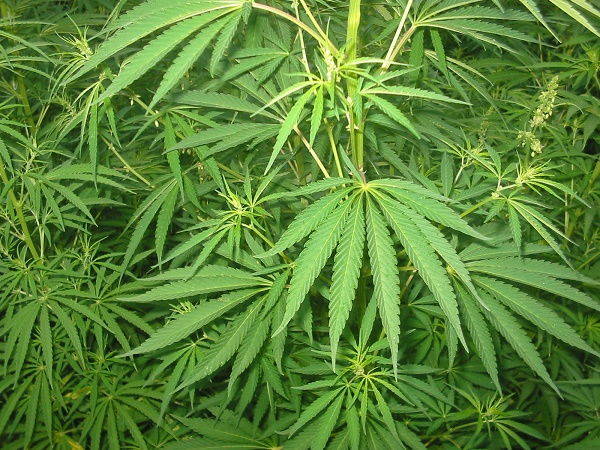
The large hemp family includes several species of plants. Among them, the species most used by man is the Hemp Sativa, whose resin is practically free of cannabinoids, those psychotropic substances of which Thc is the main component.
Cannabinoids, on the other hand, are present in the leaves and inflorescences of another species of hemp, the Indian Hemp or Indica Hemp. Its resin is rich in thc, and this active principle has always been used by man a curative purpose. The oil derived from hemp was a medicine in the Ayurvedic tradition.
But the therapeutic properties of cannabis were also known in the West. The practice of smoking rolled hemp leaves for healing purposes is very old. For centuries, cannabis has been used as a medicine.
This plant was used as an analgesic, against migraines, epilepsy, to counteract nausea and vomiting, glaucoma, muscle weakness, in the treatment of pain caused by cancer. To give an idea of its therapeutic importance, consider that at the end of the 30th century, about XNUMX% of the drugs on the US market contained cannabis extracts.
His psychotropic effect it is actually quite bland, and in any case it wears off about 2-3 hours after taking it.
Read also: MARIJUANA: 10 POTENTIALS AND BENEFITS FOUND OF THERAPEUTIC CANNABIS
In any case, in the face of the numerous therapeutic benefits of hemp, its psychotropic properties do not justify the boycott that this plant has suffered worldwide. The explanation is more subtle and much more abject. As mentioned, hemp can also be used to produce paper, and, not least, without cutting down a single tree during the production process.
Some copies of the Bible published by Gutenberg, as well as the French Constitution and the American Constitution itself were printed on hemp paper. At the beginning of the 30s a new technology was introduced in the United States, which, through the mechanization of processing, made it possible to produce paper from hemp cellulose in a more economical way than cellulose derived from wood.
This circumstance would have jeopardized the empire of William Randolph Hearst, the American tycoon of the paper industry, who just around those years had invested in the purchase of millions of hectares of woodland intended for the production of cellulose fiber.
His fierce aversion to hemp met the equally interested convergence of Lammot Dupont, an industrialist who had just gotten permission from Congress to patent some synthetic fibers derived from petroleum, the main one being nylon.
Both tycoons were funded by banker Andrew Mellon, who lobbied Congress to ban hemp cultivation. Through the active and complacent collaboration of his son-in-law Harry Anslinger, head of the Federal Narcotics Office, a powerful and shameful media campaign was engineered to demonize the Mariujana.
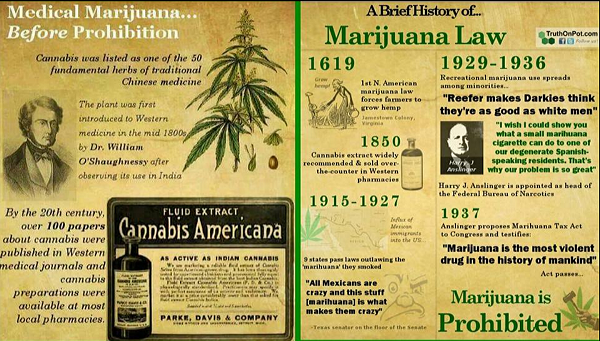
Images were projected of people who, prey to the hallucinatory effects of the marijuana, committed suicide or committed heinous crimes, even going so far as to kill other people. Even the name of this drug was not chosen at random. Marijuana was the Mexican name for grass.
Just as today, in the collective imagination of the average American, the Mexicans represented the enemies. After all, in the 1846s, the echoes of the war between the US and Mexico (1848-XNUMX) that erupted due to the American annexation of Texas were not that far off.
Therefore, attributing a name taken from an idiom perceived as an enemy to a substance considered extremely dangerous, did nothing but reinforce its negative value. The media campaign and pressure from the paper and oil lobbies resulted in Marijuana Tax Act of 1937, which effectively prohibited the use, trade and cultivation of hemp throughout the United States.
Although THC is found only in the leaves and flowers of a particular species of hemp, Hemp Indica, the ban extended to production of the entire hemp family and all of its parts. The leverage of drugs and social dangerousness was used to disguise sinister commercial interests.
In 1941 Henry Ford, the pioneer of the automotive industry, made a prototype of car with hemp and agave fiber, entirely powered with hemp ethanol. There Hemp Body Car it was much lighter than steel, and 10 times more impact resistant.
In addition, feeding with a fuel derived from hemp made it possible to do without gasoline and other fuels derived from petroleum, with enormous benefits for the environment. Ford's ambition was to build vehicles entirely made and powered by hemp and its derivatives.
Unfortunately, he died a few years later, in 1947, and his projects were abandoned, under pressure from the petrochemical lobbies, which saw the hemp car as a dangerous competitor.
The ferocious demonization of this plant, now underway, proved unstoppable and soon destined to cross the same American borders. By the end of the 50s, the United States had acquired real economic and political leadership also thanks to military involvement and victory in the world conflict.
Through their global hegemony they managed to impose a ban on growing hemp in virtually all states under their direct or indirect control. This prohibition, however, had devastating effects on the health of the planet, since, by contributing to the spread of petroleum derivatives, it opened the way to phenomena hitherto unknown: pollution and greenhouse gas production.
It is precisely since the 60s that the debate in American public opinion has focused on the dangers of cfc, an acronym for chlorofluorocarbons. These are chemical compounds deriving from methane and ethane, highly polluting for the atmosphere and considered to be mainly responsible for the greenhouse effect and global warming. They are known under the commercial name of freon, a registered trademark by the chemical company Dupont.
Furthermore, as always happens, prohibition ended up having the opposite effect, increasing the use of marijuana for psychotropic purposes. Not only. The stigma of forbidden plant it has increased the economic interest on the part of criminal organizations, also diverting it to other components of hemp, exploited to make huge profits. In addition to marijuana, today on the black market we often findhashish, which is the resin of hemp, with a high concentration of thc.
Hashish has a more powerful psychotropic effect than marijuana, and above all it is much more frequent than it comes altered with other substances, such as paraffin or other more dangerous ones, such as sand and pulverized glass. It is estimated that in hashish sold on the street there is an average concentration of the active ingredient equal to 3-4%, practically nothing.
Marijuana prohibition has instead achieved the devastating result of annihilate the production of industrial hemp and criminalize cannabis for therapeutic purposes. With deleterious effects on the environment and on the possibilities of human care.
In recent years, we are seeing a slow rediscovery of hemp and a slight increase in its production.
Read also: From Ilva dioxin to hemp. The ransom of the farmer of Taranto
People tend to learn more, and the benefits of this prodigious plant are beginning to be known by an increasing number of people.
In the United States, for example, at the same time as the presidential vote and the victory of Donald Trump, 9 states voted for the legalization of marijuana. One, Arizona, rejected it. The other eight states have instead approved the legalization of cannabis for therapeutic purposes.
Of these eight, four states (California, Nevada, Maine and Massachussets) have approved the use of marijuana for recreational purposes as well.
They are small steps, signs of an incipient change of direction. But the crossing is still long and stormy.
To learn more, we advise you to watch the documentary by Massimo Mazzucco "The true story of Marijuana":
Angela Petrella





